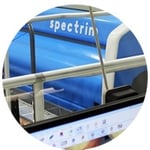
The demand for fresh produce is ballooning worldwide. Packhouses are busier than they’ve ever been in order to meet increased demand, while continuing to offer a wide range of products of different sizes and levels of quality inside innovative packaging. Despite the increased volumes, end consumers still expect the quality of every fruit to be consistently high — and whether or not these expectations are met can make or break brands.
Fruit packhouses must execute this brand promise while packing fruit as efficiently and as quickly as possible, as well as ensuring a fair deal for the growers that supply them. Compac believes that integrated data is the catalyst to revolutionize the fresh produce industry, and at the same time it will improve fruit quality and packhouse throughput while reducing the cost per pack.
Where does the data story start?
The data story for a fruit begins well before it is packed. Which fruit variety is it? What fertilizers and sprays are being used and how much? Were there any hailstorms or frosts while the fruit was growing? How much rain fell? How much sun did the orchard get?
It continues from the time of the pick to the end of the pack. Which tree or vine did the fruit come from ? Who picked the fruit? Which bin did the fruit end up in? When was the bin tipped at the packhouse? What was the fruit’s quality and size? Which bag, box or pallet was the fruit packed into?
? Who picked the fruit? Which bin did the fruit end up in? When was the bin tipped at the packhouse? What was the fruit’s quality and size? Which bag, box or pallet was the fruit packed into?
And it doesn’t stop there. Data continues to be generated until the fruit is eaten. Where did the box go? How long was it stored? Who bought the fruit? Who ate the fruit? Did they like it? If not, why?
Answers to most of these questions already exist in information silos throughout the supply chain, and weaving together the answers to all of these questions is unquestionably powerful.
Matching data from one end of the supply chain to the other
An apple could be traced back from the supermarket shelf through to where it grew in the orchard, and to all points
in between. This is becoming a common legal requirement but it can also help to match data from one end of the supply chain to data from the other. For example end consumers could gain access to detailed information about each of the fruit that they order. This could clear the way for new business models to emerge that could allow consumers to ‘design’ their own fruit to meet their own personal tastes.
of the supply chain to data from the other. For example end consumers could gain access to detailed information about each of the fruit that they order. This could clear the way for new business models to emerge that could allow consumers to ‘design’ their own fruit to meet their own personal tastes.
Growers could get detailed feedback on the breakdown of defects of the fruit in their crop from Compac Spectrim and Inspectra systems, or actual consumer experience feedback from the people who ate the fruit. Firstly, this data could help packhouses accurately pay growers for exactly what was brought in on the truck. Secondly, it could provide growers a great deal of information about which varietals or blocks perform better, which fertilizers are more effective, and what the right pick times are, to help growers make better decisions about their crops going into the future.
Data drives the packhouse bottom line
Packhouses are at an exciting intersection point as all this data will play a key role in their future performance. But the same data can be used to drive the packhouse’s bottom line. Sampling data could be combined with throughput data from the Compac Sizer and the carton handling system to maximize packs per minute while keeping quality consistent, counteracting the impact of a conservative operator and pushing the packhouse to perform to its  maximum potential, all the time. The result would be a consistently higher level of throughput, which means more effective use of labor and a lower cost per pack.
maximum potential, all the time. The result would be a consistently higher level of throughput, which means more effective use of labor and a lower cost per pack.
Bottlenecks and downtime in the packhouse could be identified and cost/revenue data pulled from the ERP to see what impact each machine has on the bottom line. This would allow packhouses not only to identify the machines that are costing the packhouse money, but also to accurately quantify how much money they are costing and allow better capital expenditure planning.
Data could be pulled from HR management software and combined with throughput data from the Compac Sizer as well as quality data from Compac Spectrim to determine the cost per pack in real-time. Manual downgrades could also be analyzed to monitor staff productivity. Integrating this data would allow packhouse or line managers to see whether labor is being used effectively within a production run and allow them to re-allocate staff as needed. It would also give them the information they need to minimize the amount staff they take on for a given fruit variety, for a given grower, or for a given defect breakdown, which would help them to lower overall labor costs and reduce cost per pack.
Compac is serious about data
Compac’s machines are the only machines in the supply chain that have access to data on every single fruit that  passes through a packhouse. For each fruit, Compac takes up to 500 images, up to 25 NIR Inspectra readings, and an accurate fruit weight. Our machines have the built-in intelligence to take this raw information and determine the color profile and sweetness of the fruit, the location, size and severity of any defects inside or on the surface of the fruit, and match this information back to the grower and attribute it to the box the fruit ends up in.
passes through a packhouse. For each fruit, Compac takes up to 500 images, up to 25 NIR Inspectra readings, and an accurate fruit weight. Our machines have the built-in intelligence to take this raw information and determine the color profile and sweetness of the fruit, the location, size and severity of any defects inside or on the surface of the fruit, and match this information back to the grower and attribute it to the box the fruit ends up in.
Compac is committed to harnessing the power of data throughout the fresh produce supply chain. We see the benefits very clearly. It is the future of fruit packing and we look forward to working with packhouses as we navigate through our shared data journey.



